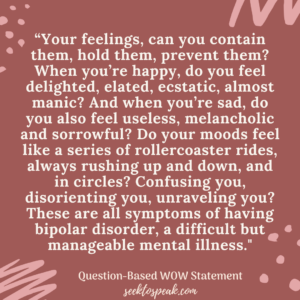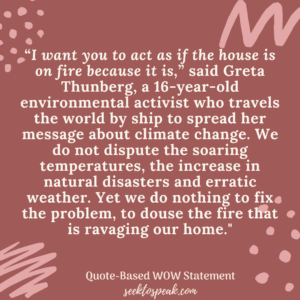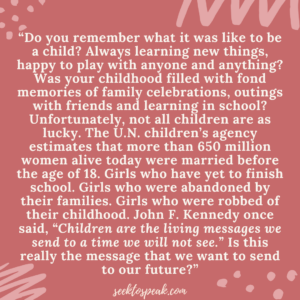It only takes 7 seconds for a person to have an impression of you, to pass judgment, and to determine your “trustworthiness”. This is why first impressions are so important. In a speech, this first impression comes in the form of your introduction – the first thing you say to the audience.
Hence, your audience is going to judge your whole speech in the context of how well you do in your introduction. In this “Introducing Introductions” series, we will look at how to build powerful beginnings and set up the best stage for your ideas to shine.
Great introductions achieve three things. The first is to grab the attention and interest of the audience. The second is to reveal your topic and preview your speech. The third is to establish your credibility and goodwill. In this article, we will learn how to achieve the first objective through WOW Statements!

Getting Attention and Interest
Simply put, WOW Statements are statements designed to make the audience go, “WOW!” (yes, in capital letters). Statements with enough WOW factor are those which are able to:
1) Connect with the audience, through relatability, empathy, and humor; OR
2) Create a sense of urgency, signifying the importance of your speech; OR
3) Surprise the audience, arousing their sense of curiosity.
If the opening of your introduction achieves at least one of the above objectives, those statements are considered “WOW Statements”. Great WOW Statements are able to achieve all 3 goals.


WOW Statements
Wow Statements can come in many forms, but they typically consist of Anecdotes, Evidence, Questions or Quotations.
1) Anecdotes
Stories are a great way to build a connection with the audience as stories are personal and relatable. However, WOW-level stories must be told in a way that evokes emotions and a sense of empathy. It should be descriptive enough to create a Word Picture, typically engaging the 5 senses – what you see, touch, hear, smell and taste. It is not enough to tell a story, in simple terms like this:
“I went to the beach with my family and almost drowned. There was no lifeguard around. Thank goodness that my brother noticed and was trained in first aid. If not, I would not be here right now.”
Instead, it should be an emotive and descriptive Word Picture like this:

2) Evidence
Startling facts and statistics are a great way to show the importance of your message, invoking a need to listen. Many speakers also start with a string of evidence to show their credibility and expertise in the matter, obtained through experience or research. But WOW-level evidence must be current, specific and surprising. It should consist of not one, but a series of facts and/or statistics, packaged together in a way that is most impactful to the audience. For example, this is a common evidence-based start to a speech:
“On average, 20 people die every day from the lack of available organs for transplant. Another name is added to the national transplant waiting list every 10 minutes. This is tragic as this phenomenon is easily avoidable if more people pledged their organs to those in need”
In contrast, a WOW-level evidence-based opening would look like this:


3) Question
Asking a rhetorical question gets the audience thinking and reflecting on the issue. However, these questions cannot be directly on the topic. They must be subtle and specifically crafted to invite reflection as well as suspense. The audience must be thinking about themselves and the answers. It is also not enough to just ask 1 question to the audience as they would not be invested enough to reflect. Here is a bad example of an opening question:
“Do you sometimes feel so happy, you’re about to burst? But other times, so sad, you feel like dying? Well, you might have bipolar disorder.”
In contrast to this WOW-level series of rhetorical questions:

4) Quotation
A quote is an easy WOW Statement hack. It allows the speaker to rely on the goodwill and credibility of other famous people in order to enforce the speaker’s point of view. Quotes are also great to inspire thought and encourage reflection. However, a WOW-level quote must be compelling, unique and interesting. Hence, it cannot be cliche. A great quote is also one that is entangled with a message – it cannot stand on its own. For example,
“Wendell Berry once said, “The Earth is what we all have in common”. Today I’ll be talking about Climate Change and what we can do to help.”
The above quote opening is ineffective as no effort was made to explain the importance or message behind the quote, making its impact quite flat. Sometimes it is not the strength of the quote itself that gets the message across but the way in which the quote is used. Even the simplest of quotes can be powerful when used properly,

Do we need to pick just one?
Of course not! You can create WOW Statements out of anecdotes, evidence, questions, AND quotations. Combining select general statements of fact, quotes, and facts, can lead to great WOW-level openings like this:
